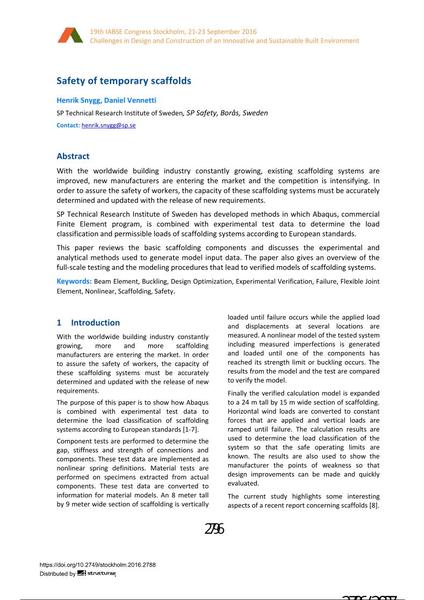Safety of temporary scaffolds

|
|
|||||||||||
Détails bibliographiques
| Auteur(s): |
Henrik Snygg
(SP Technical Research Institute of Sweden, SP Safety, Borås, Sweden)
Daniel Vennetti (SP Technical Research Institute of Sweden, SP Safety, Borås, Sweden) |
||||
|---|---|---|---|---|---|
| Médium: | papier de conférence | ||||
| Langue(s): | anglais | ||||
| Conférence: | IABSE Congress: Challenges in Design and Construction of an Innovative and Sustainable Built Environment, Stockholm, Sweden, 21-23 September 2016 | ||||
| Publié dans: | IABSE Congress Stockholm, 2016 | ||||
|
|||||
| Page(s): | 2796-2803 | ||||
| Nombre total de pages (du PDF): | 8 | ||||
| Année: | 2016 | ||||
| DOI: | 10.2749/stockholm.2016.2788 | ||||
| Abstrait: |
With the worldwide building industry constantly growing, existing scaffolding systems are improved, new manufacturers are entering the market and the competition is intensifying. In order to assure the safety of workers, the capacity of these scaffolding systems must be accurately determined and updated with the release of new requirements. SP Technical Research Institute of Sweden has developed methods in which Abaqus, commercial Finite Element program, is combined with experimental test data to determine the load classification and permissible loads of scaffolding systems according to European standards. This paper reviews the basic scaffolding components and discusses the experimental and analytical methods used to generate model input data. The paper also gives an overview of the full-scale testing and the modeling procedures that lead to verified models of scaffolding systems. |
||||
